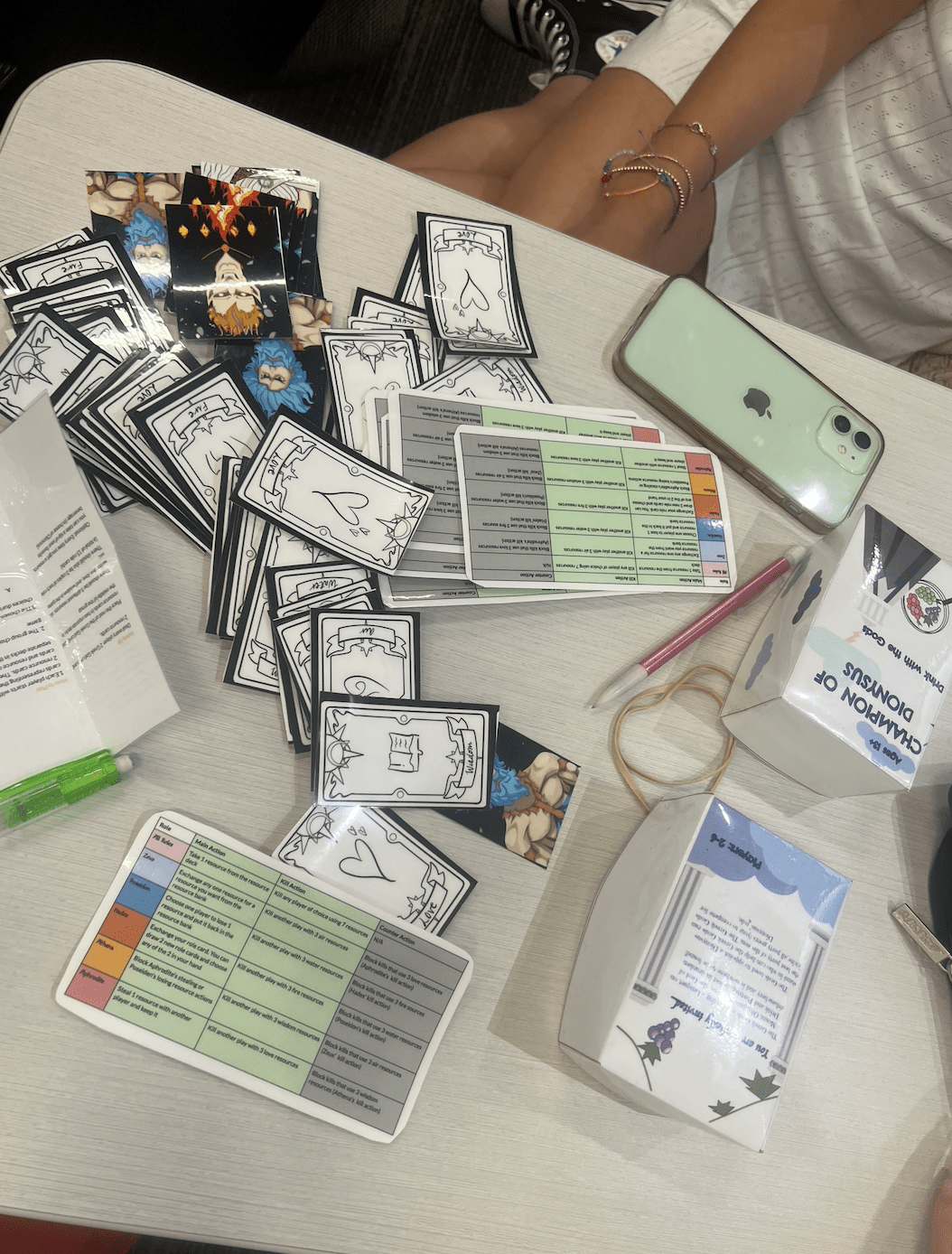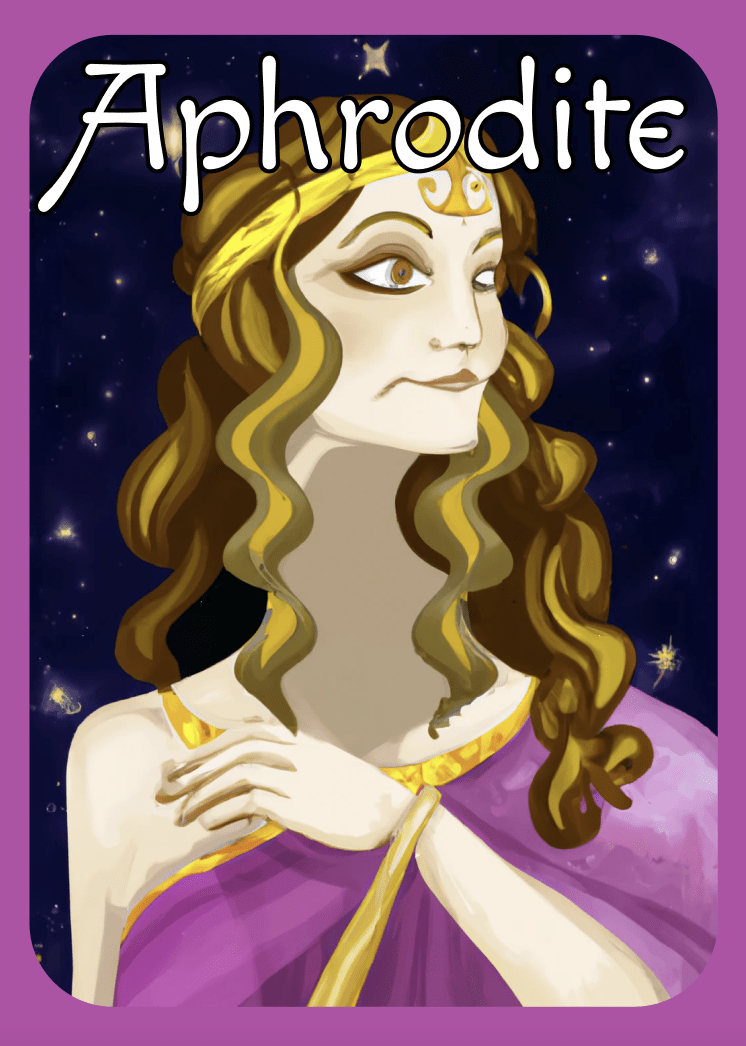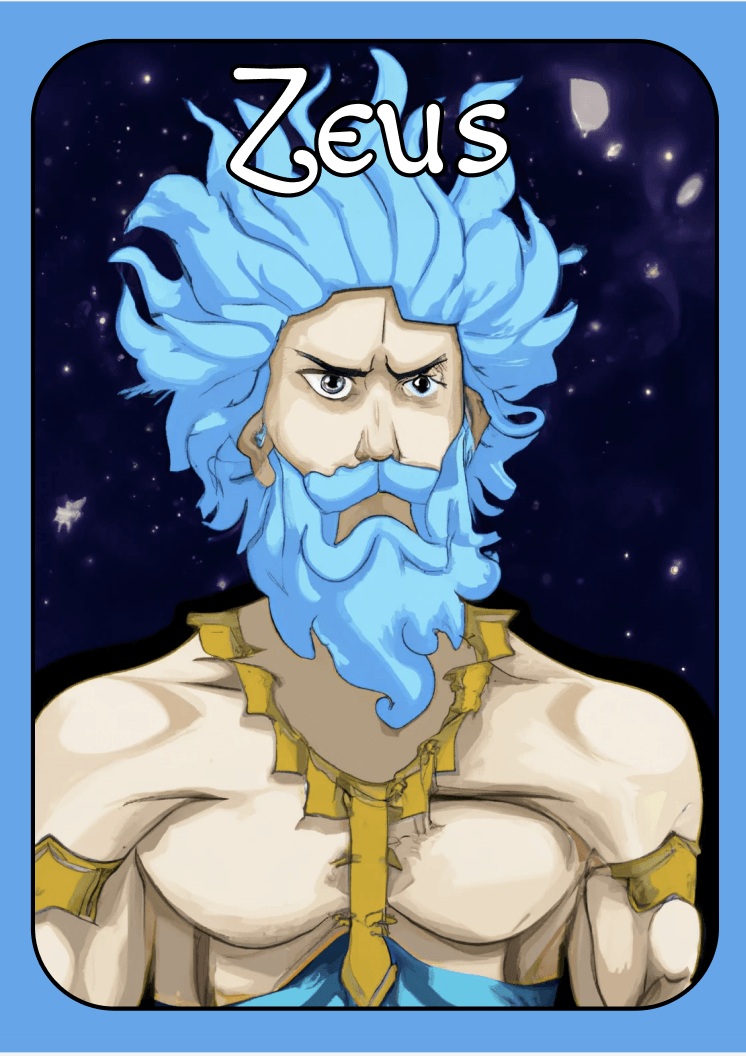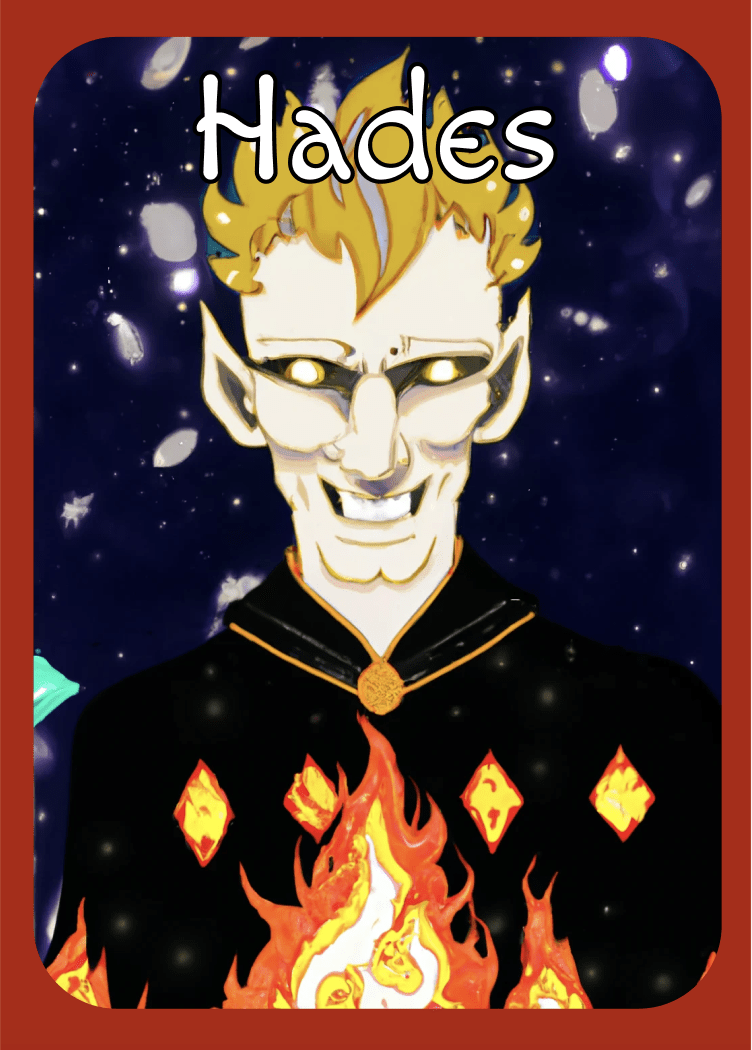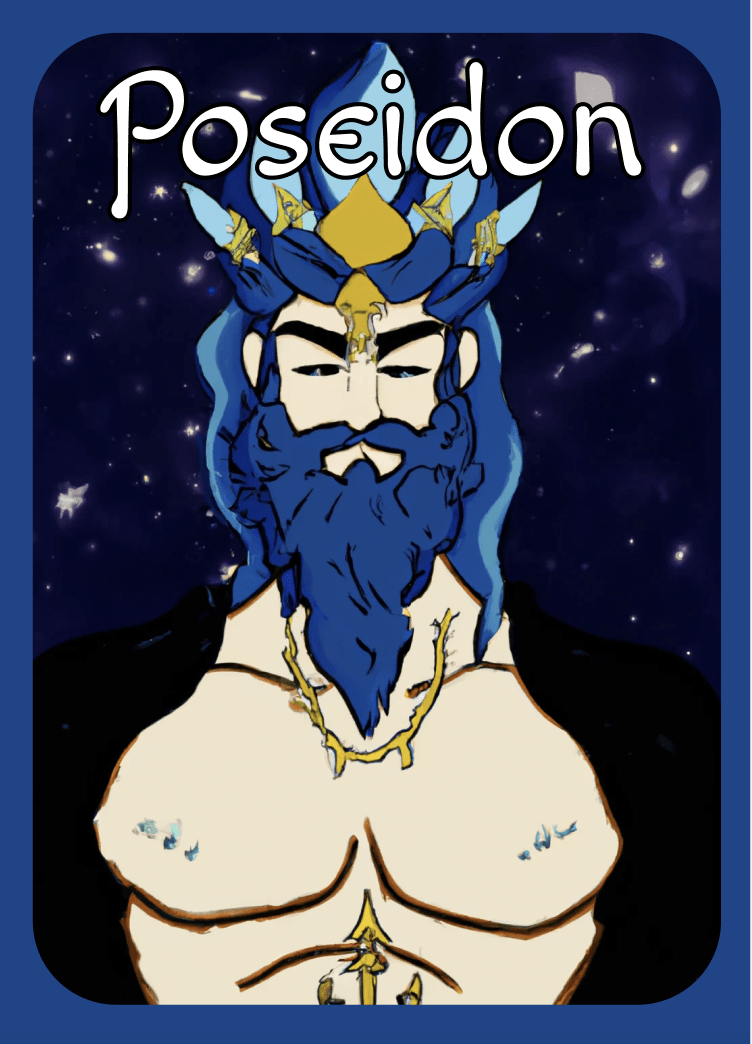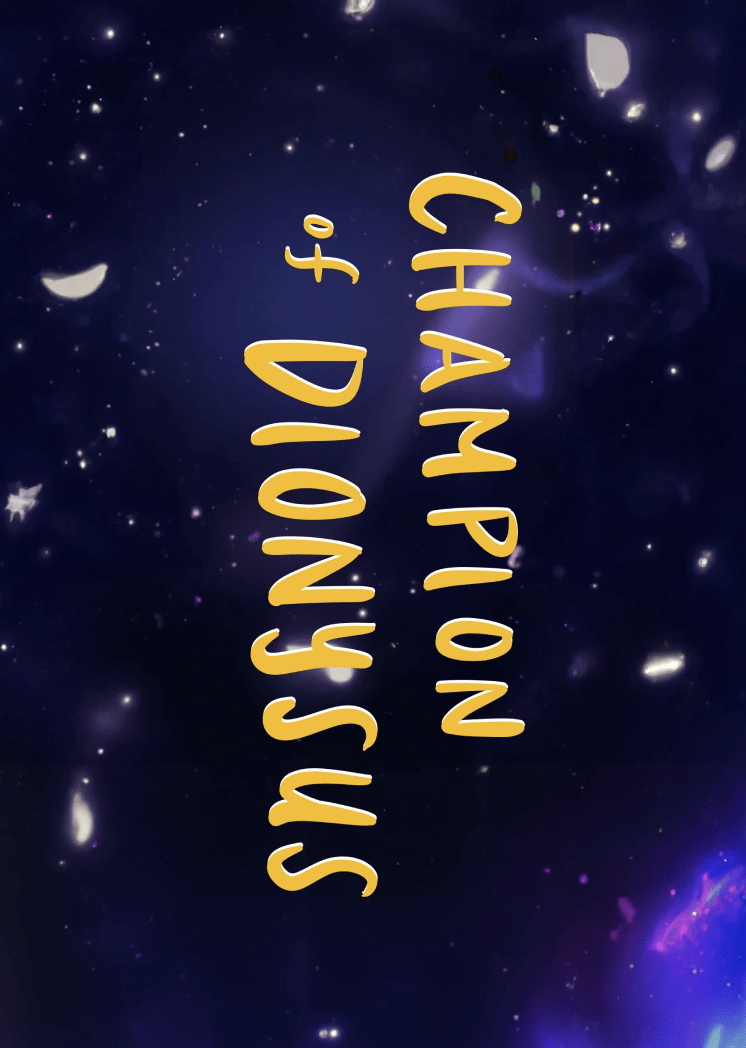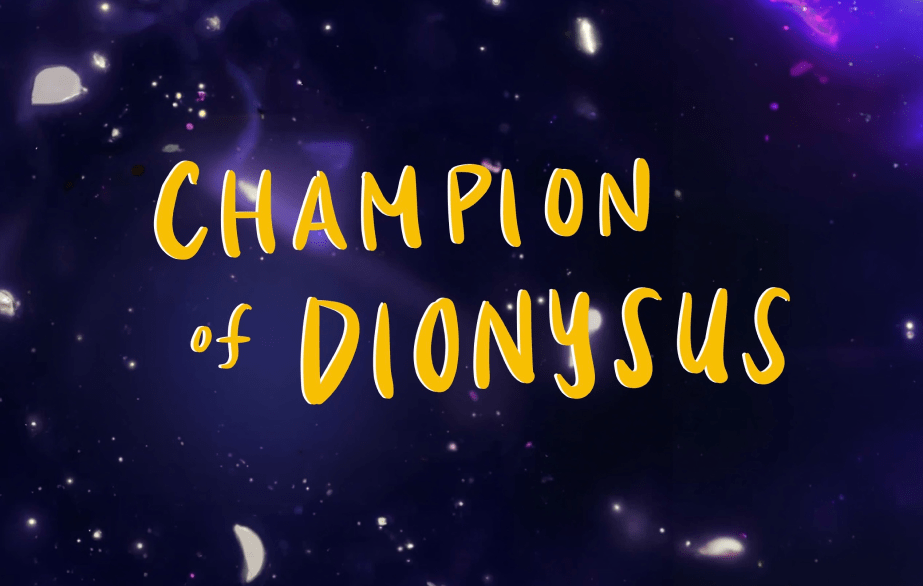
Designers
Melanie Zhou, Jasmine Vonk, Pannisy Zhao, Dria Lee, and James Chao
Artist Statement
As the creators of Champion of Dionysus, we sought to tap into the fascination that many of our younger selves had with Greek mythology and the legendary stories of Greek gods and goddesses. At its core, Champion of Dionysus is about power and the pursuit of glory, with players taking on the roles of the most powerful beings in the Greek pantheon and fighting to the death in order to take Dionysus’s place.
But beneath the surface, this game also explores deeper themes about deception, betrayal, and the murky lines between good and evil. As the gods lie and scheme to outmaneuver one another, players must carefully navigate the complex web of alliances and enemies, never knowing who they can trust or when they might be targeted for elimination.
To add an extra layer of complexity, players must also strategically manage their resources, using them to gain advantages over their opponents or to defend themselves from attack. In this way, the game forces players to make urgent, difficult choices and to carefully weigh their options at every turn.
Ultimately, Champion of Dionysus is a thrilling and immersive experience that encourages players to think creatively, strategically, and, most importantly, to have fun. Whether you’re a fan of Greek mythology or simply looking for an exciting new game to play with friends, we believe this social deception game will keep you on the edge of your seat from start to finish. Godspeed!
Print and Play Link
Roles:
Resources:
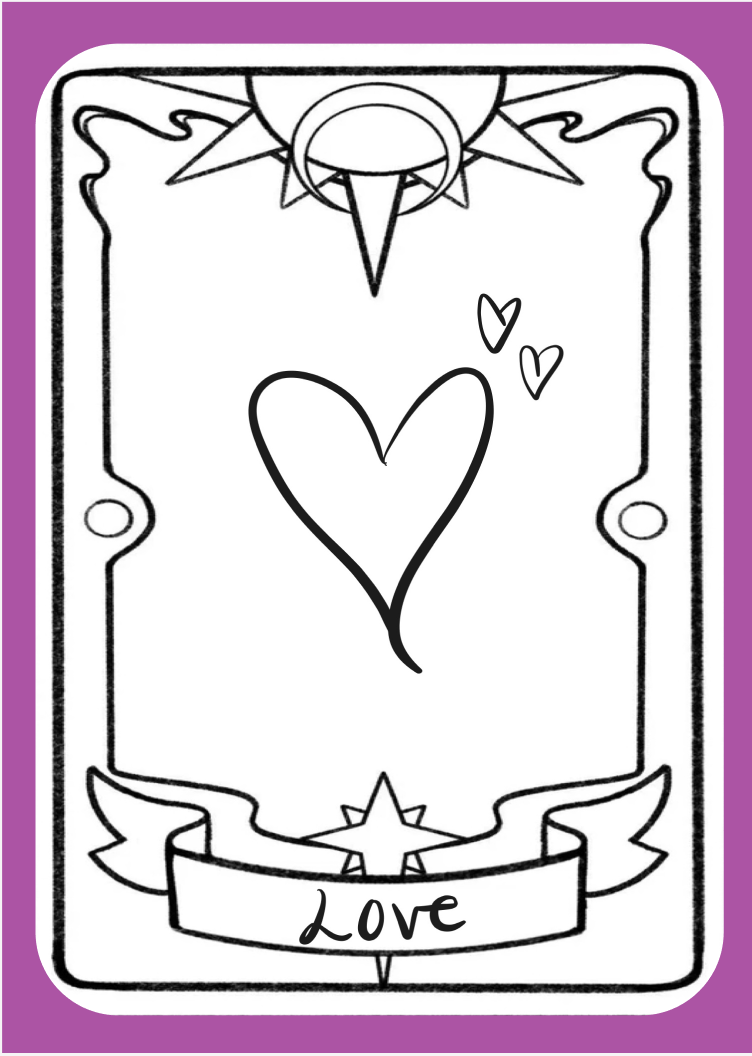
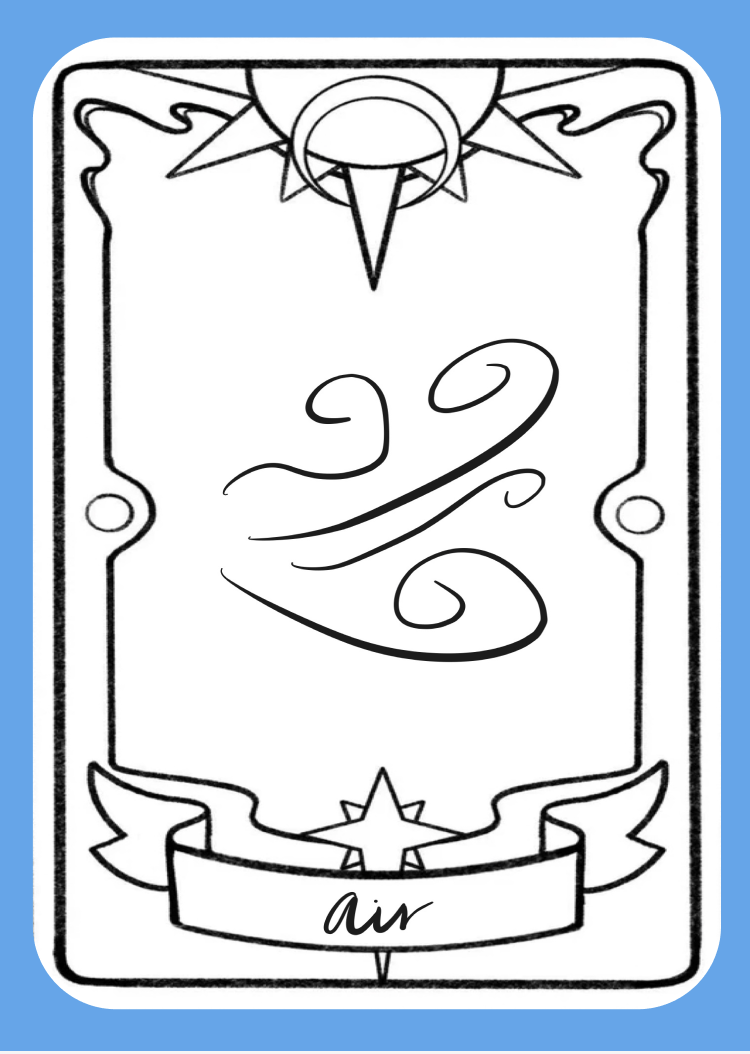
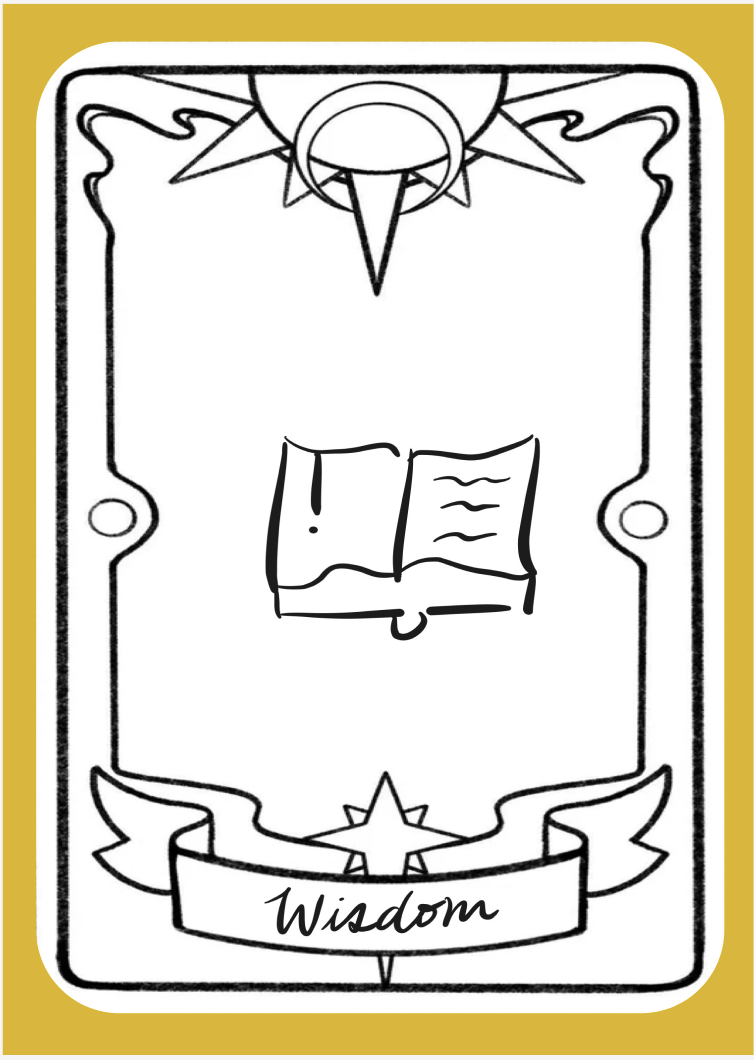
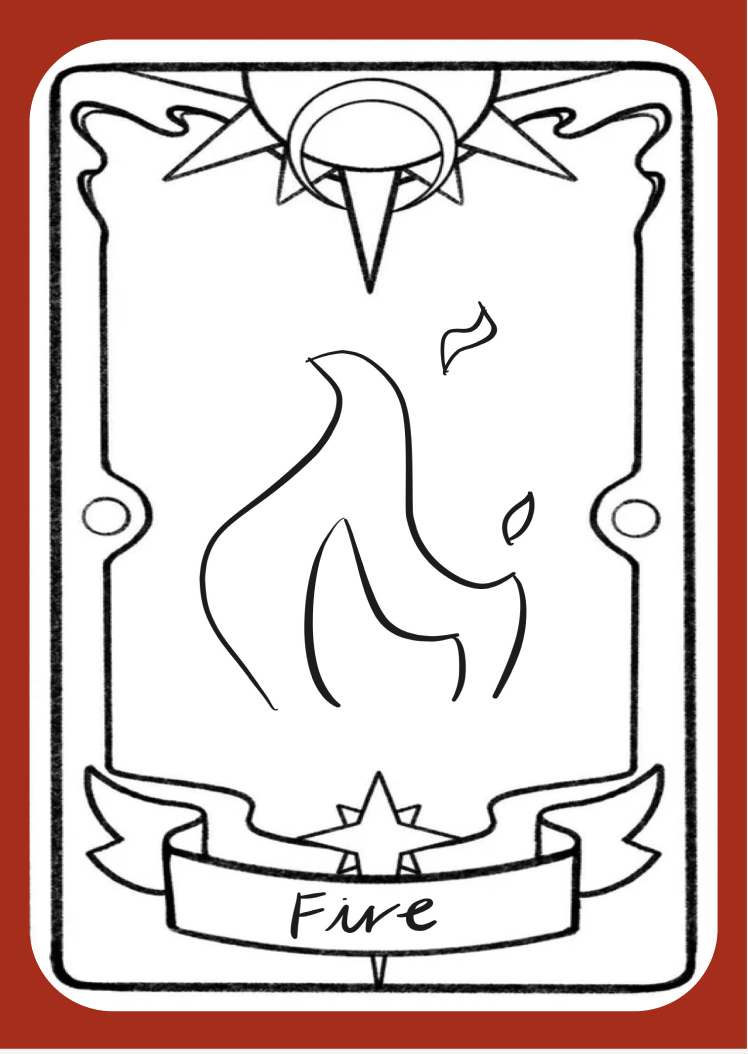
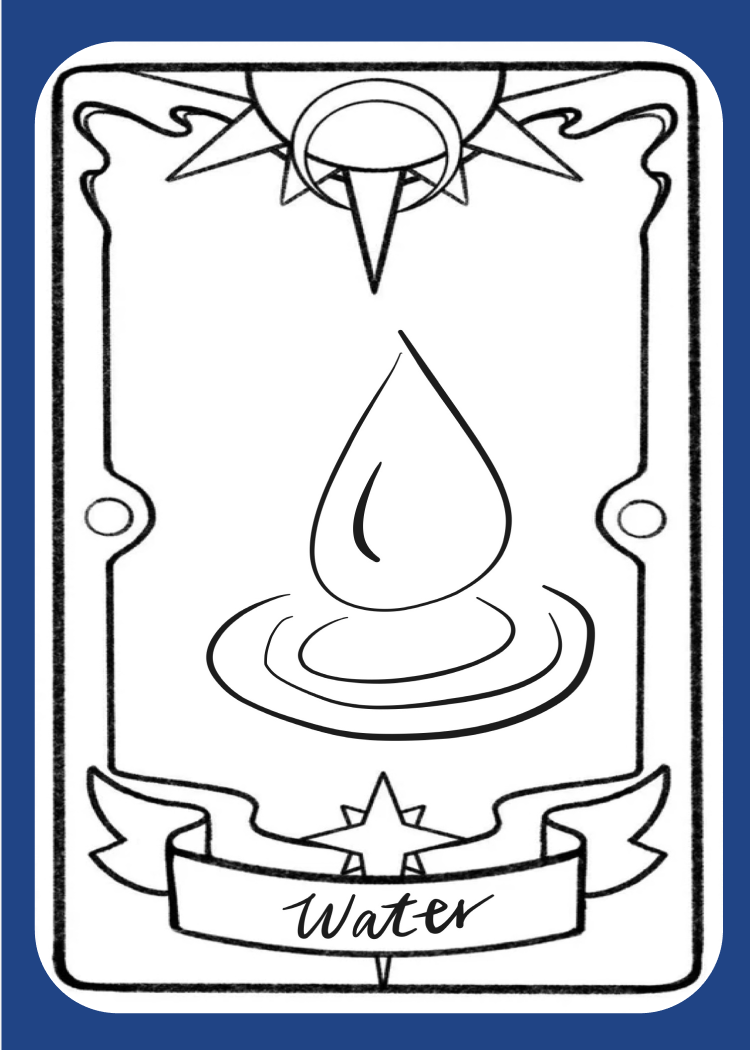

Roles Chart:
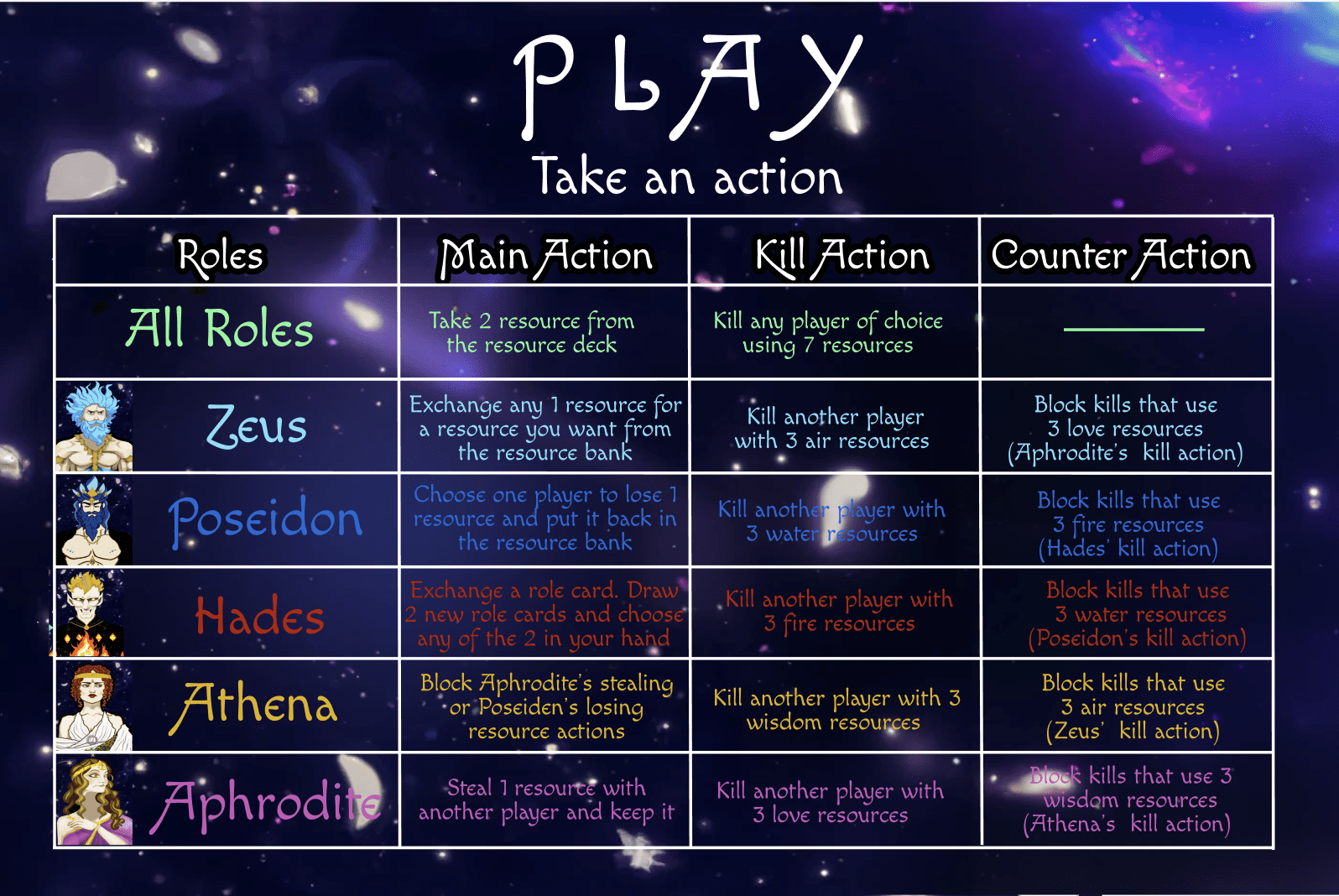
Rules:
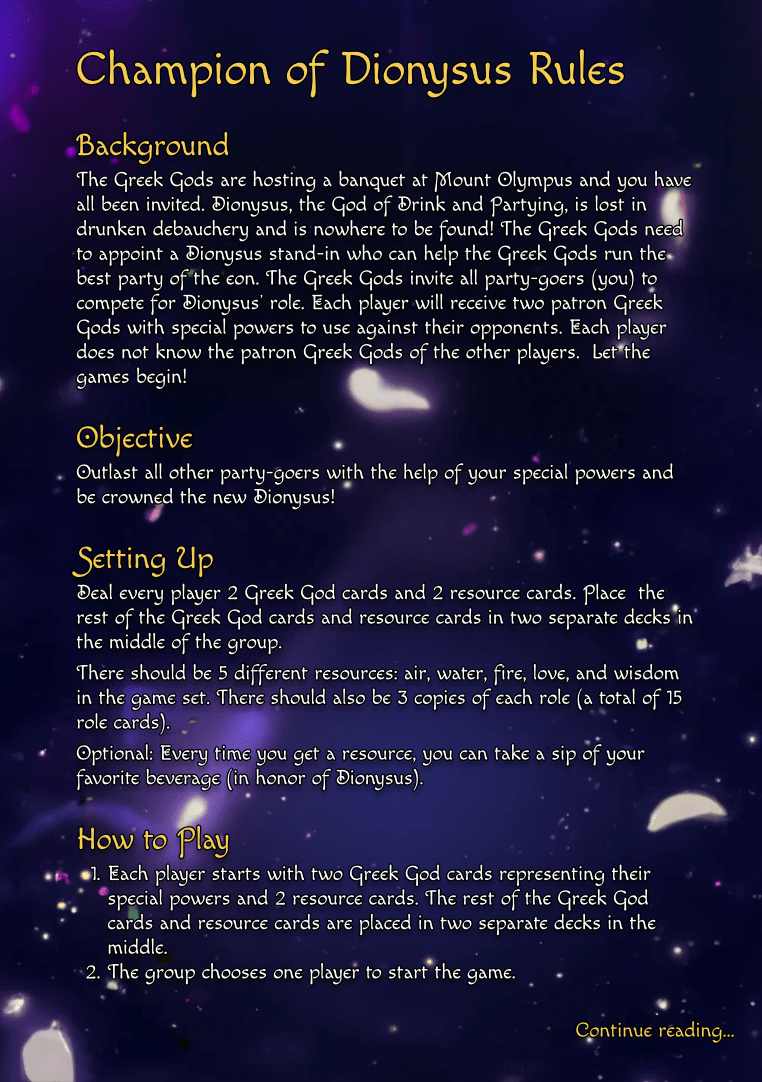
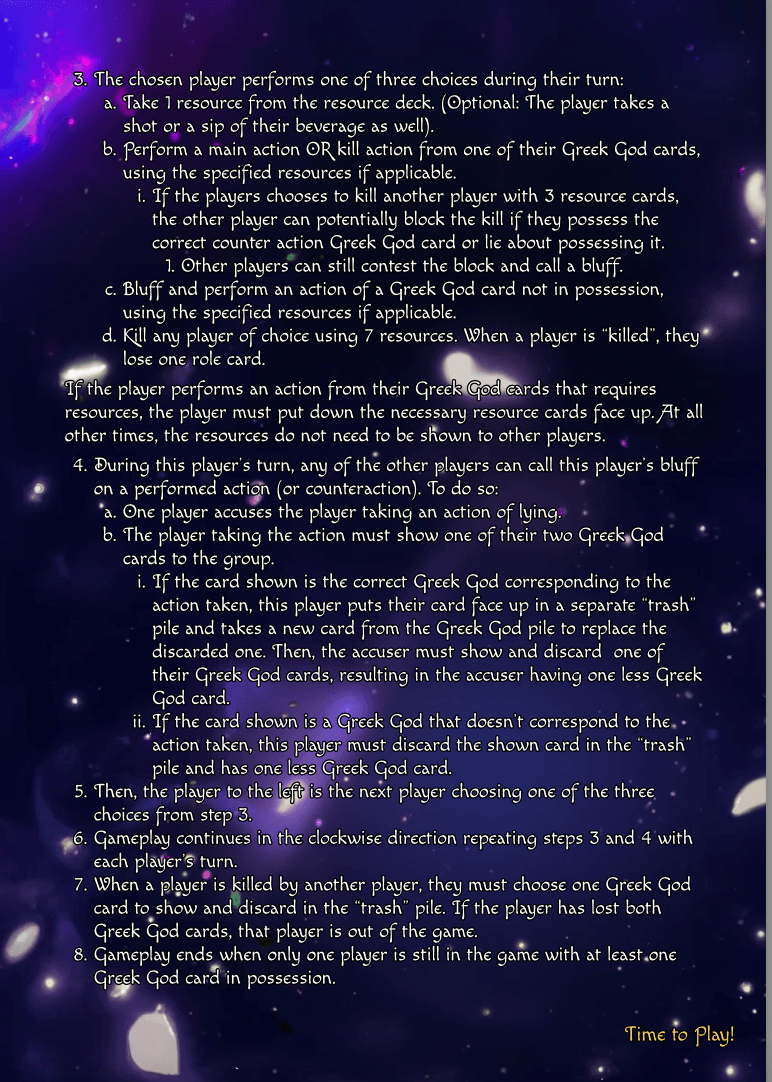
Concept Map
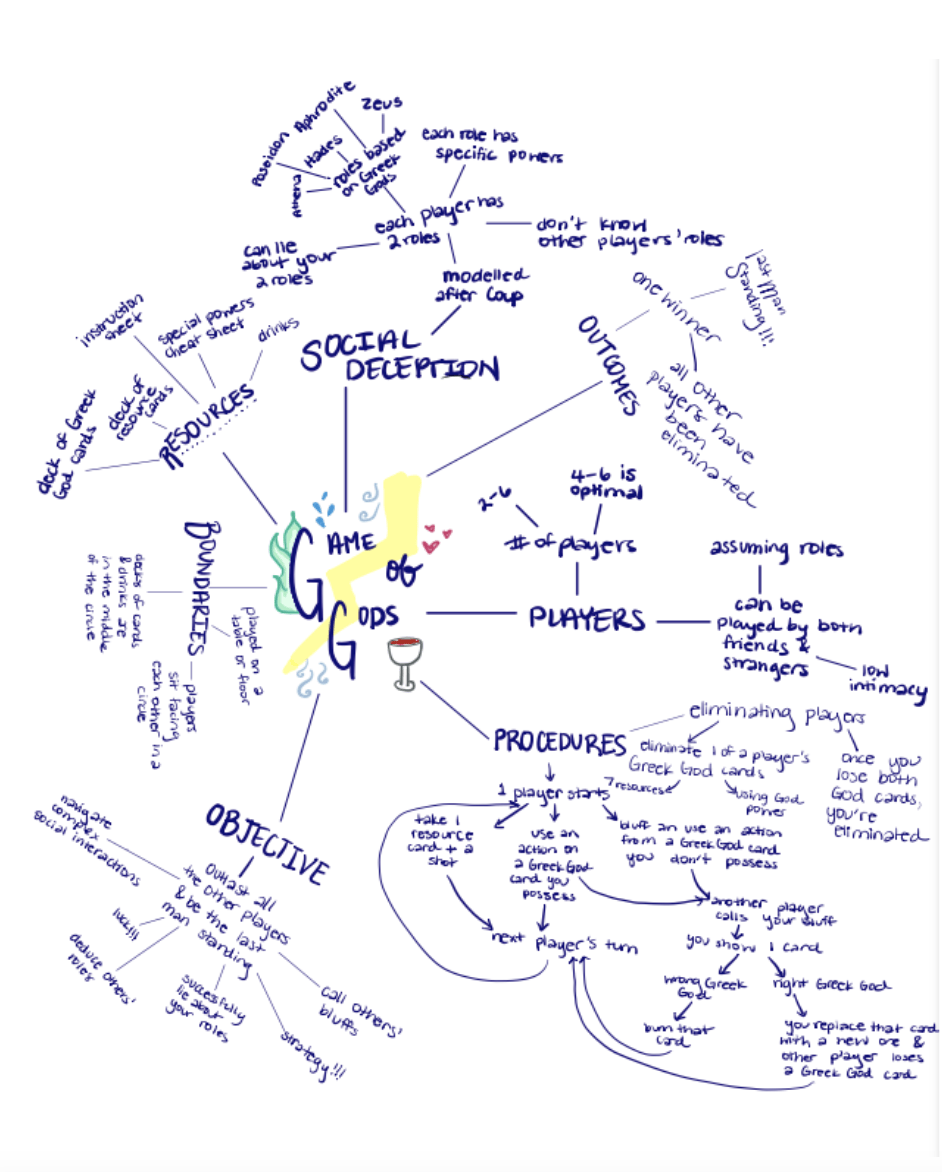
Initial decisions about formal elements and values of your game
Concept Iteration 1
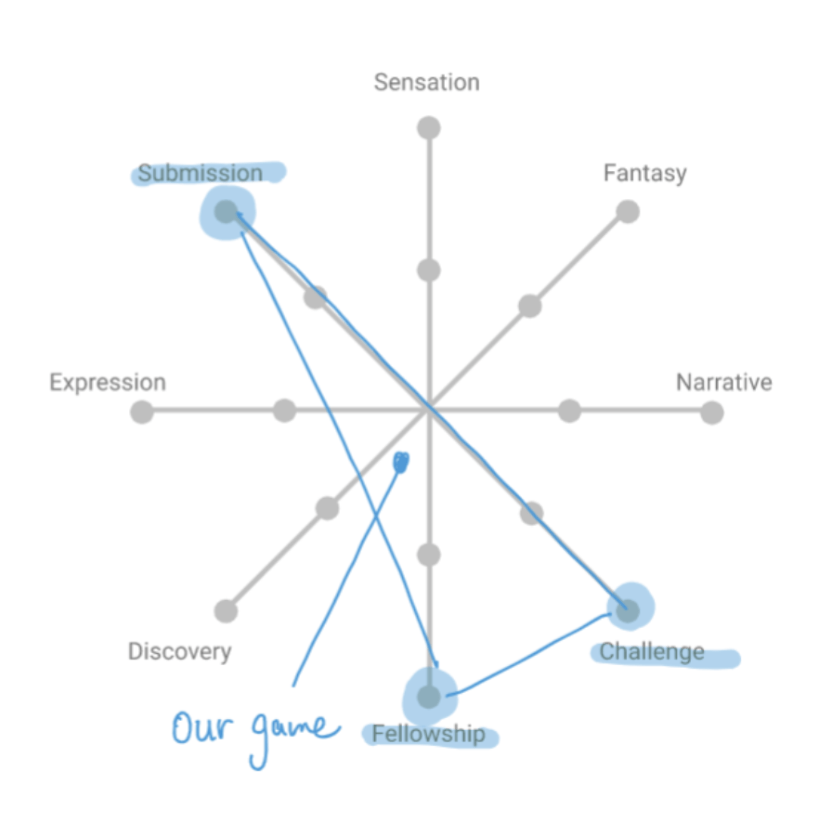
In our initial brainstorming about our game, we were interested in developing a game that combined fellowship, challenge, and submission. We hoped our game would be a multilateral competition or team vs team as a way to create fellowship among 4-6 players.
We really admired the vulnerability and riskiness of games such as Beer Pong, We Are Not Really Strangers, Truth or Dare, and For the Girls, and thought it would be interesting to combine them. Thus, when initially designing our game, we wanted to create a sociable drinking game that was a combination of Fear Pong and For the Girls. Our brainstorms included:
- Set up:
- Beer pong layout (cups lined out and two opposing teams)
- 2 v 2 game with game monitor
- Truth or dares under each cup
- Card deck with intense/vulnerable questions
- Objectives:
- Knock down all of the opposing team’s cups
- Complete the most challenges and questions without fail
- Rules:
- Players take turns throwing balls into the other team’s cups, if they make a shot the other team has to finish the drink and the cup/challenge is removed.
- If a player does not want to answer the question or challenge, they have to drink (the amount depending on the extremity of risk)
- Incentives:
- We wanted to create a get-to-know-you game, so as players get more drunk they get to know the other players
- By providing incentive, risk, and challenges we hoped to increase engagement in our players throughout the game
- Possible features:
- We considered making the game an elimination game, so in each round someone is eliminated. This would change the goal of the game to be the last man standing
- We considered making the challenges/questions increasingly more difficult/intimate to make it more difficult for players to stay in the game
- We considered prioritizing the partner bond so instead of answering the question for yourself, you have to answer for your partner. If you got their answer wrong then you have to drink.
Concept Iteration 2
During Week 2 of class, our team had the opportunity to play Coup for our critical play. For many of us, this was the first time we had experienced “bluffing” and “lying” as a game dynamic. The social deception, betrayal, and alliances of Coup were so enthralling that we played the game multiple times. Over time, we learned that we each had different player profiles influencing our likelihood to take risks and bluff or be defensive and collect resources. Some of us were “jokers” who questioned everyone, some were “collectors” who wanted resources no matter what, and others were “storytellers” who justified their moves within the fantasy landscape of Coup. All of these different player profiles were satisfied through this game, and Coup became a great way to get to know each other better. Because of this experience, we decided to do a complete concept pivot of our game.
We wanted to create a social deception game that still emphasized our core aesthetic values of fellowship, challenge, and submission. We preferred this social deception game to our original beer pong/truth or dare game because this would allow us to create fun through fantasy while making the “get-to-know-you” more organic. Unlike Beer pong/truth or dare, a fantastical social deception game would be low-contact and low-risk. Additionally, Coup seemed to serve multiple different player profile types whereas our Beer Pong x Truth or Dare game would only support “socializers.” We had also studied Coup very well at this point, and identified ways we would improve the game.
We hoped our game would achieve the following:
| Mechanic | Dynamic | Aesthetic |
| Social deception with different role cards that each have different powers | Bluffing about your role and powers in order to eliminate other players or gain more resources for yourself. | Players feel challenge from the frustration of not knowing the true role and powers of other players. |
| Greek mythology theming | Players have to justify their patron gods whenever justifying or defending their actions with other players. | Players feel fantasy from acting as the champions of legendary Greek gods and goddesses and exercising new powers against other players. Connects to Greek mythology lore that many of us grew up with. |
| Kill action on role cards,
Social deception with role cards |
Informal alliances are formed to eliminate vulnerable players from the game. | Players feel fellowship from deciding who to “kill” and who to survive when they unlock their “kill” action. |
| The different possible actions during each round: collect, act, or defend. | Over time, players identify and track each other’s player profiles to determine who is likely to bluff, play passively, and play aggressively. | Players feel submission because they get to learn about each other’s tendencies as players, which then informs how to target players in the game |
Testing and iteration history (summarize each iteration; big findings only)
Please find our iteration history attached (10 pages).
Champion of Dionysus Iteration History
Video of Final Playtest
https://drive.google.com/file/d/11V0Mowfi9HTE1XUX4t8qhunF-bw1rpBY/view?usp=sharing
Extra Credit
We printed a version of our game and laminated it. Shown to TAs on Thursday, April 27th during class.
